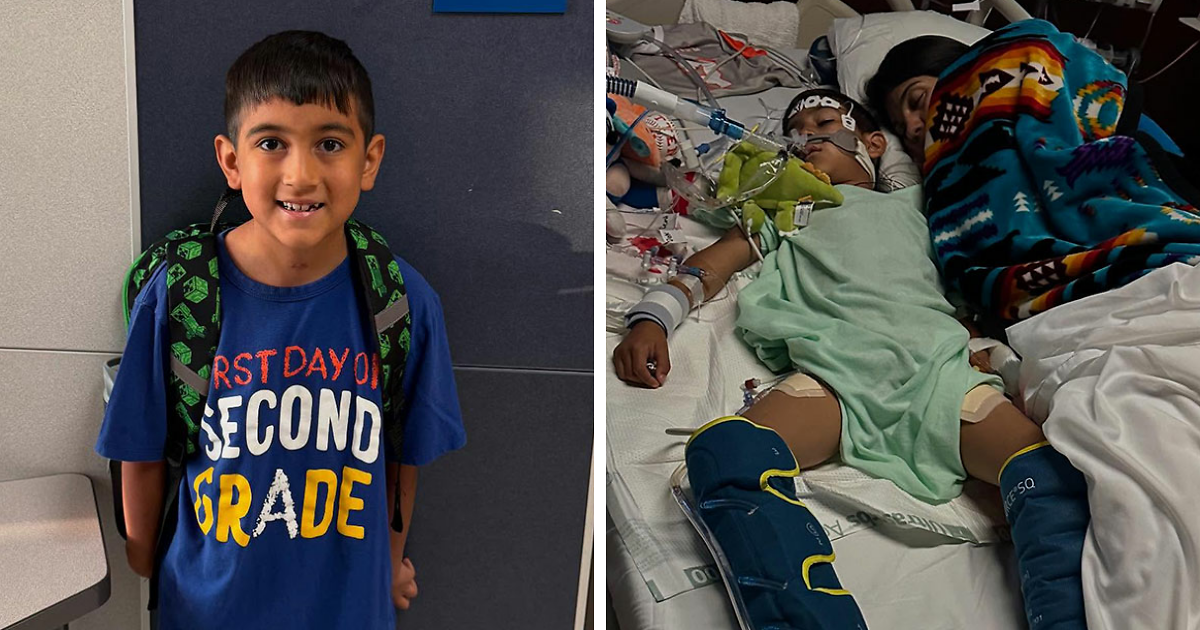How a Mom’s Late-Night Google Search Uncovered a Hidden Danger After Her Son’s Mysterious Collapse
Ever had one of those days where a simple diagnosis turns out to be a plot twist straight out of a medical thriller? That’s exactly what happened to Texas mom Casey Daniel, who was told her son Witten just had the flu—only to watch him become paralyzed within hours due to a rare brain disorder that causes cells to bleed. Imagine being told your little league MVP could lose the ability to walk, talk, and even breathe on his own in just 24 hours. Nobody expects their child’s flu to come with a sinister sidekick called a cavernoma—a cluster of leaking cells near the brain stem that’s as rare as finding a needle in a haystack. This story isn’t just about a misdiagnosis; it’s a profound reminder of how life’s curveballs can hit hard and swift, and how keen observation—sometimes boosted by a little Google investigation—can make all the difference. Curious about the signs you’d never expect and the battle to get proper diagnosis and care? Dive into the details and discover why knowing what to look for might just save a life. LEARN MORE.
Texas mom Casey Daniel was told her young son Witten had the flu, only for him to become paralyzed hours later—because of a rare brain disorder that makes cells bleed.
The boy, a little league MVP, lost his ability to walk, talk, and even breathe independently in 24 hours.
Doctors then realized that the child had a cavernoma—a mulberry-like cluster of leaking cells near his brain stem.
- Texas mom says son was misdiagnosed with flu hours before paralysis set in.
- MRI later revealed a cavernous malformation near his brain stem, a rare disorder affecting 1 in 2,000.
- Connie Lee, Alliance to Cure CEO, says seizures and face drooping are key warning signs.
The prognosis was dark: Casey heard that due to the condition that affects 1 in every 2,000 people, her boy would likely never walk again.
In another case, a pediatrician thought it was an earache
Image credits: caseyarend
Another person to witness the medical anomaly in their offspring is Connie Lee.
She recalls how her four-month-old daughter struggled to sleep and started becoming progressively more irritable over the course of a week.
Like Daniel’s case, the doctor initially thought the infant was suffering from a minor ailment.
Image credits: caseyarend
The pediatrician observed the child’s raised fontanelle (the soft spot on an infant’s skull), pondered on the probability of an earache, and prescribed amoxicillin.
An MRI showed that Connie Lee’s daughter had multiple tumors on her brain
When Lee returned home, her baby had started projectile vomiting, and thus she could not keep the medication down.
This prompted a call to the doctor, who then scheduled an MRI at a children’s hospital.
Image credits: caseyarend
The resulting imagery would show that Lee’s months-old daughter’s brain had numerous tumors, the largest of which was four centimeters.
“She was in crisis,” Lee recalled. “Had she not had the brain surgery that day, she would not be with us now.”
Cavernous Malformations are raspberry-like clumps of leaking brain cells
Connie Lee is also the CEO of the Alliance to Cure Cavernous Malformation, a patient research foundation and advocacy for people with the disorder .
Answering questions for Bored Panda on September 20, she described the condition as “abnormal” and “leaky” blood vessels that look like “a raspberry or mulberry.”
“Blood tends to flow through them pretty slowly because they’re in the capillaries of the brain blood vessels and they can occur anywhere in the brain or in the spinal cord,” she explained.
Seizures are a telling sign of the disorder
Lee goes on to say that the most telling symptoms of cavernous malformation include focal seizures, which affect at least 50 percent of patients.
Image credits: Getty/Unsplash
These events affect an area of the brain triggering failures in speech and vision and involuntary behaviors in the body while the patient is still conscious.
She further notes that the symptoms experienced by the patient “depends on where the cavernous malformations are located,” explaining that they can translate into “abnormal body” movements and “weird smells that no one else around [the patient] can smell.”
“About fifty percent show up with seizures that are focal seizures, meaning the seizures happening in just a small area of the brain,” Lee elaborated.
Another sign of Cavernous Malformation is a drooping face
Image credits: alliancetocure
“Other folks, when they first have a Cavernous Malformation symptom, will have some sort of neurological deficit,” her explanation continued.
“It can be face drooping or vision issues, weaknesses, numbness, tingling in arms and legs.
“Those are not necessarily related to the most severe presentation of CCM (cerebral cavernous malformation), which is hemorrhage.
Lee went on to say Witten Daniel, the little boy who suffered complete paralysis in a matter of hours, fell into the category of CCM patients whose leaking blood vessels become full brain hemorrhages.























